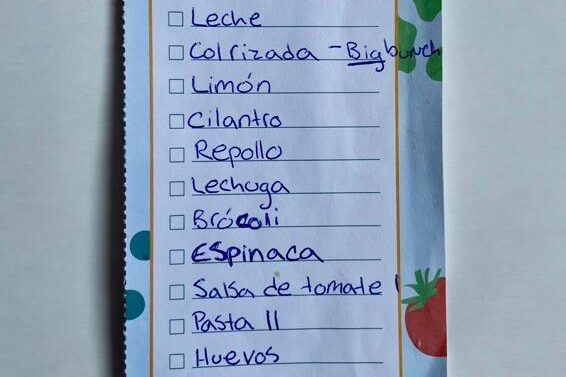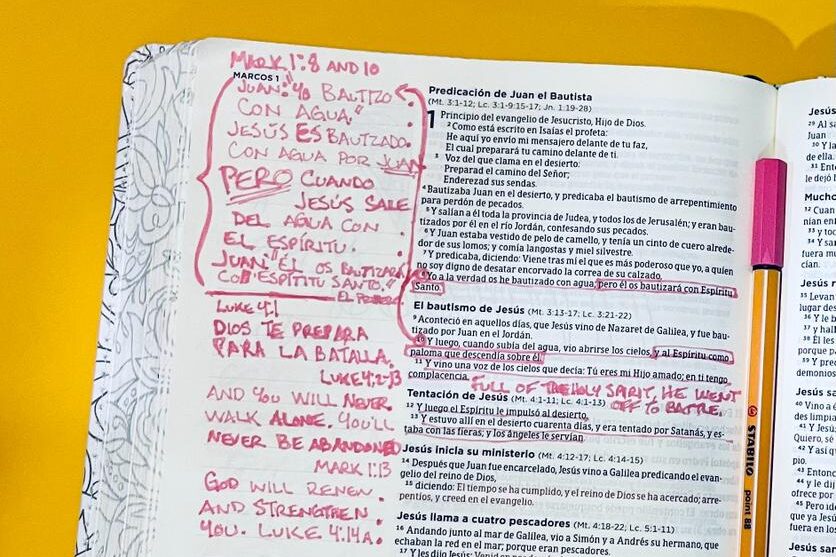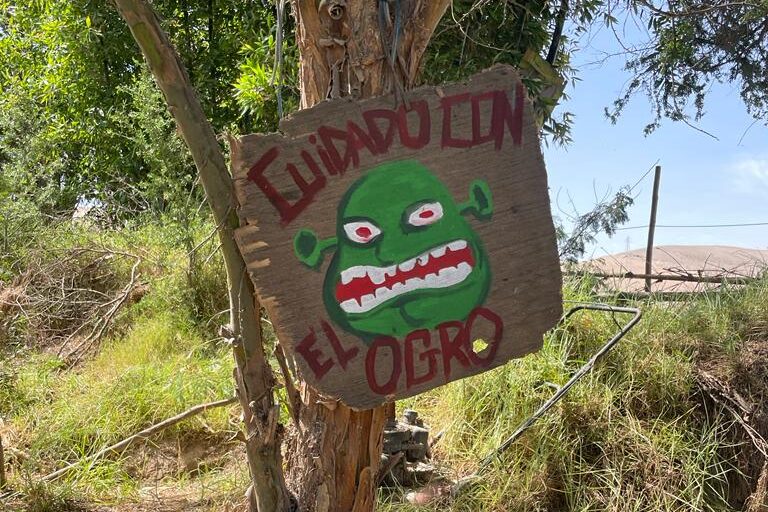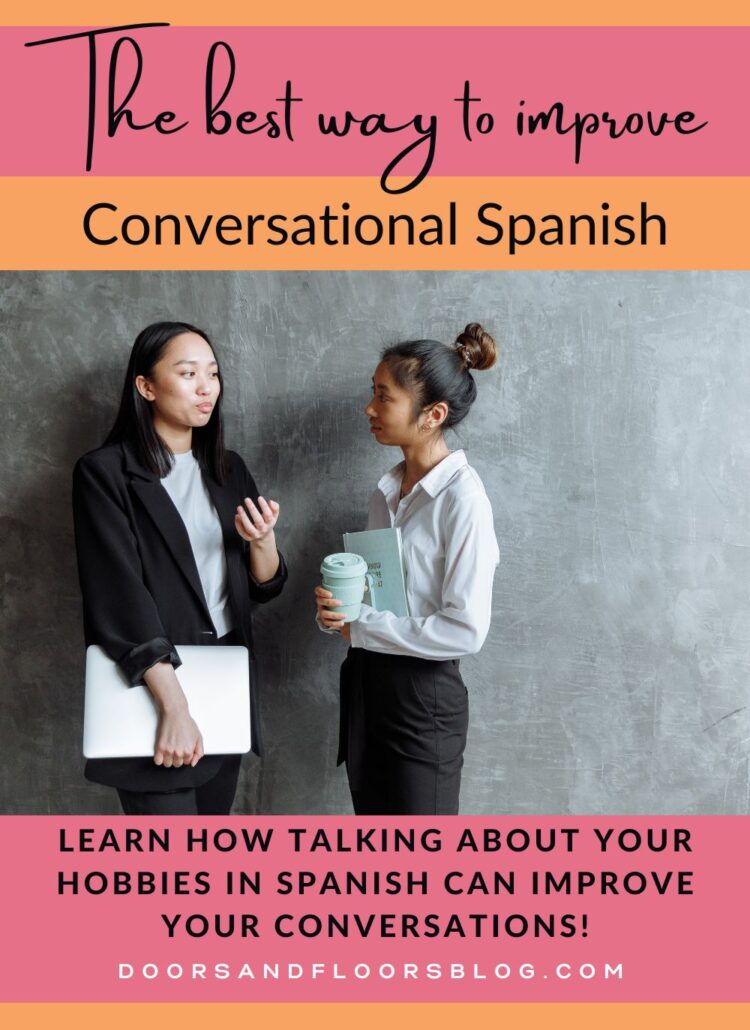
So…you’re looking to get some superpowers, huh?
Let me explain…I like to say that knowing how to communicate in two languages makes you a superhero. Flying and laser vision–that’s for amateurs. The real superheroes with the superpowers are out here listening in Spanish and translating mid-sentence in English. Or any other combination of two languages, that’s just my firsthand experience with superheroes.
If you’ve come here because you want to know how to learn a new language, I can give you some practical starter tips that can be applied to any language learning, though you will see I specifically reference Spanish. I do feel as though my language learning is still in the beginner steps, so don’t expect anything too advanced from me just yet, but we’ll work towards it.
Personally, I’m tired of apps promising practical Spanish and delivering only “Hello” and “Hola.” All my language learning is done firsthand, learning from friends and family and teaching myself. So I hope this list helps you, as it has helped me.
This post may include affiliate links.
Please read my disclaimer page for more info.
*As an Amazon Associate, I earn from qualifying purchases.*
Make it a part of your daily routine

Look, life is busy – I’m sure you didn’t need that obvious piece of information. But with life being so busy, and me working a full-time, 9-5 job, sewing in all my spare minutes, running a blog, and church on Sundays, the question is a big WHEN–do you find time to learn another language?! And how long does it take to learn a new language?
Well, to fully master that superpower, it takes years. My husband studied English–nonstop–for two and a half years. I’ve been trying to learn Spanish for a little over a year now and I feel like I’m maybe a third of the way to getting my superhero status. Granted, I don’t practice anywhere close to as hard as my husband did, so maybe remove a few points for that.
My brothers and I famously call each other out for complaining about not having enough time to do X, Y, Z. Because the thing is, “You have time for what you make time for.” So you don’t find time, you make time for what’s important to you. Sorry to call us all out like that…
With that said, I cannot stress this enough, do everything you can to make it a part of your daily routine – this will help you to not get burnt out and overwhelmed with the learning process. My brain is tired after work, I don’t want to study, I want to relax and sew. So by creating an atmosphere for it to “Simply” fit into my daily routine, I don’t have to burden myself anymore after work.
Now you may be asking, “How the heck do I fit language learning into my work schedule?” And the answer is – YouTube. I leave YouTube open while I’m at work.
Being the psychopath that I am, I have approximately 357 videos saved to my playlist. This is relevant because by leaving my playlist open all day, I’m able to quickly switch between videos. Any type of videos.
When work is crazy busy, I put music on, both in Spanish and English. But when work slows down or I’m just doing data entry and I can easier process things, I switch to any kind of video that will teach me something, whether it’s a how-to video, Spanish lessons, or a sermon. The possibilities are endless.
Another great thing that can help, is swapping out your normal weekly planner for a Spanish version. It’s just as easy to fill out as the English version, but it exposes you to the Spanish version of some common words you’re used to using. It may even encourage you to start writing your to-do list in Spanish!
Grocery lists

When I was just starting out, this helped me so much in learning my common household food items and a few kitchen things. When I make my shopping list and meal plan for the week I write all the groceries in Spanish. Strawberries and onions, laundry soap and toilet paper – yeah, I know them all now. I’m so cool.
The real advantage to this…should I ever need to, I can go grocery shopping by myself. Grocery shopping in Perú isn’t the same as the grocery stores in the States – there are a few stores, but for most stuff, we go to the markets. When you’re at the market getting your groceries, sometimes you don’t take and pick yourself, you ask for it. Which is great for easy and no-pressure practice if you’re new to Spanish. Because talking about onions and potatoes isn’t scary.
In addition to that, when we go out to eat and I get handed a menu, I recognize most of the ingredients listed. So one small act of writing my grocery list in Spanish has enabled me to be more independent in other areas. Check out this post about reading a Spanish menu to help grow in this area some more!
When we go to dinner at my in-law’s house and they ask if I’d like corn with my meal, I now know what they’re talking about and can respond on my own.
I recommend getting a cheap to-do list from Amazon (or the Spanish weekly planner I mentioned above) so you can write out your grocery list in Spanish, but also easy day-to-day tasks, like lavar ropa (wash clothes/laundry).
Sticky notes – if you’ve got them

Your house should look like a school project. Stick them on the oven, the table, the doors…
This is great for your early stages of learning a new language. It not only teaches you the words and how to say them, but should you ever need to spell “Oven” and “Door”, you can whip out your sticky note knowledge and be like, psh, yeah, I’ve got this. Granted, it would help if you knew how to say the Spanish alphabet, but it’s okay if you don’t, just being able to write words in Spanish is already a huge advantage.
I just chucked a couple of these in my suitcase before moving to Perú and use them all the time.
I will say, don’t neglect the little words. You may be asking, “But Elisha, when am I ever going to even need to use the words ‘Oven’ and ‘Door’?” You’d be surprised how much they come up in daily conversations with family. If you’re asked to open the door or if you cook or bake…or if your Uncle quizzes you on common household items every time you visit his house, you’re going to need to know these words!
You can thank me later.
Journal it

Write it down. Write it all down. Similar to the previous tip, but less art project-y.
I made a list of verbs, and a list of phrases, sentences, and words. I make small Bible notes in Spanish, and love notes. And of course – I made a list of all the bad words…I was told I couldn’t share those with you though…sorry.
My best tip for taking notes in Spanish during church or Bible study-is to just get one sentence down. One sentence based off of ten minutes of the sermon/lesson, even if you don’t hear or learn anything else during that time. Honestly, it’s usually a real struggle to walk away with much of anything during lessons anyway. But if you get something written down – you’re more likely to remember it.
So here’s how I do it. I always use my Spanish and my English Bibles side by side, it helps me to understand where we’re at and what we’re talking about, in addition to my listening and trying to understand. Then whatever thought that I would have journaled in English I translate it into Spanish. Try to use the words you already know and a translator app, before going to your person to ask for help. Once I have my thought formed in Spanish and it has been proofread by my husband, then I write it in my Bible.
I use this Spanish Bible, it has lots of space for writing in it and areas you can doodle in.
The more you journal it and with the repeat of use, the more likely you are to remember it and learn it faster.
FOCUS
There’s something fascinating about learning a new language. If you don’t focus, like genuinely, truly put all your might into focusing on the conversation at hand, you can just check out of the conversation. Which is a bad thing if you’re currently standing in the middle of a group of people who are having a conversation with you, even if it is via your translator. Don’t be rude.
When I go to church, even if I only understand 40% of the words spoken, which I’ve learned is actually a pretty decent amount when it comes to helping yourself understand where the conversation is going. If I’m not focusing, I cannot understand anything.
LISTEN
On a similar note to the last one, you have to really listen. This being a different language and all, it’s actually surprising what you can pick up on based off of how similar the Spanish word sounds to the English version.
Some words in Spanish that sound similar to the English version you already know, are:
Spanish – English
- Peculiar – Peculiar
- Distancia – Distance
- Interestante – Interesting
- Necesario – Necessary
- Situación – Situation
- Apocalipsis – Apocalypse
Never be afraid to ask people to slow down and repeat themselves. “Puedes repetirlo mas lento por favor?” Because honestly, sometimes it’s not so much that you can’t understand or participate, but that you just didn’t hear it.
Pro-tip: try drawing to help you focus. Drawing really helps my mind to remain empty and open to listening instead of getting lost in daydreams. And if people say you’re being rude, tell them you’re listening. “Te estoy escuchando.” I particularly like to add the name of the person I’m talking to to the end of that sentence…and I usually say it with a bit of a sassy tone. But be honest with people, tell them this is how you focus better, learning a new language is HARD.
Read it

Read books and signs on the side of the road. You can read the exit and bathroom signs and restaurant menus. For best results, read it out loud and in the presence of, if not to a native Spanish speaker so they can correct your pronunciation and help you understand the meaning of specific words.
Personally, I like to read one chapter of my Spanish Bible out loud to my husband before bed every night, but I’m not very good at being consistent about it.
You can also find some good children’s Spanish/English books online that give you a good handful of basic words. That’s how I learned the Spanish word for hug.
Expose yourself
In like…the most appropriate way…
Expose yourself to Spanish for 15 minutes every day if possible. When I’m really dedicated I like to have a YouTube conversation while I cook. It’s usually just a bunch of repeating without a translation of what you’re specifically saying, but it’s good practice! I find these videos by searching “Spanish conversation practice” in the YouTube or Google search bar.
Even more importantly, expose yourself to Spanish conversations in person at least once a week – for best results, try to participate in those conversations too! Personally, I attend a Spanish-speaking church twice a week, which helps with my listening and focusing.
Once you’re able to write notes a little, from a previous tip, it will be much easier to form sentences and share your thoughts with a group – super intimidating, not going to lie. The one time I shared something in Bible study it was a thought I had early in the night and I literally practiced in my head what I wanted to say for 30 minutes before attempting to share my thought out loud.
- I also recommend picking up some games you can play in Spanish, like Spot It!. It’s a card game that doesn’t have any words written on it, but requires you to say the word of the object when you put the card down. I’ve played this with both English and Spanish-speaking friends/family. It gives great opportunities to practice your Spanish words.
- Another great game you can play in Spanish is Monopoly. It has all of the same cards and places you’re used to, but in Spanish. I found the game felt familiar, but it also challenged me to practice my conversational Spanish without the pressure of having a full-on conversation.
- Click the video below to watch me play Monopoly in Spanish for the first time with my husband and cousin.
- One more suggestion is you can try Scrabble in Spanish. I haven’t actually played this in Spanish yet, but it’s next on my shopping list as I know it will really help me grow.
Use any–and all sentences or words in your daily conversation
If you’ve got them – let’s use them! I don’t care if 90% of your daily conversation is in English, sprinkle that 10% of Spanish in there. Even if it’s just the obvious swap of “Gracias” for “Thank you” and “Por favor” for “Please.” Use these. Daily.
Some common daily words you can swap are:
English – Spanish
- Take it – Toma
- Pass me – Pasame
- Give me – Deme/Dame
- Look! – Mira!
- Cousin – Primo/Prima
- Uncle – Tío
- Aunt – Tía
- I love you – Te amo
- Please help me – Ayudame por favor
I could give you the usual “Hola” for “Hello,” but if I’m honest, here we don’t really say “Hi” so much as we say:
- Good morning – Buenos días
- Good evening – Buenas tardes
- Goodnight – Buenas noches
- You could also just say “Buenas.”
Practice these instead! It’s a baby step, but a needed step.
In addition, check out my favorite Spanish phrases here!
Just speak – be fearless!
I feel like everyone says this, but seriously – just speak. Go for it!
Am I going to sound stupid? Yeah maybe. Am I going to make a fool of myself? No. Stop thinking that. Is everyone going to laugh? Um…well they do, but I’ve been reassured a dozen times that they’re not laughing at me or my Spanish. They just love seeing you participate. If it makes you feel better…I’ll get my husband to come give us his stamp of reassurance for my claim.
“They like your accent and the way you talk. It’s very cute for them how you pronounce some words. They might laugh sometimes but they will always be there to help you with your Spanish.”
-Elisha’s husband
Well there you go…
This is something new to you, it takes trial and error and lots of practice. There’s no way you can master it without getting over this scary step of verbalizing the words you’ve learned.
It can be so easy to let other people do all the talking for you and not even try. For me, I had to remind myself that my husband is not my translator, he is my husband, so if we go to hang out with people I shouldn’t ask him to translate every bit of conversation for me.
Granted, he does have to translate sometimes, but I try to really listen and respond on my own. Often times he tells me what to say by whispering it to me, and then I repeat what he said as if it were my own. Because I’m the one having the conversation, not him for me.
Some bad advice for you: Sometimes I kind of just go for it and guess what a Spanish word is based on the hope that it will be similar to the English version. So I just kind of throw a word out there and add an extra “A” to the end of it, or swap “Ción” for “Tion” like in “Estación” and “Station.”
But the moral of the story is, you should just go for it. Just speak. The worst thing that happens is you get corrected and learn the correct way to actually say it…or they just won’t understand you… And I promise if you do get corrected – they will do it very nicely!
Don’t be so hard on yourself
The number of times I have felt like a total loser for not being able to properly communicate is embarrassing. Because look – you are learning a NEW language, their language…but they’re not learning yours. It’s your solo journey. You’re doing amazing!
I needed this reminder so often when I was first starting out. Sometimes I would throw my own pity party and want to quit – which is completely impractical, I mean…I live in a predominantly Spanish-speaking country. So like…Elisha, you literally can’t quit.
This reminder, that it was okay to not be able to actually do it, or do it fully and perfectly, was needed almost daily for a few months there. The big breakthrough moment for me was when I reminded myself that I was a fully functioning and capable adult who was learning not her first language – she had already mastered that – but she was trying to learn her second language, while fully submersed in a country of people who only spoke that language.
Um hello, Elisha you’re doing a lot and you’re doing amazing!
So remind yourself of what you’re capable of and what you’ve already done so amazing at. Don’t look for flaws to tear yourself down. You’re doing amazing, keep going.
I know, I’ve said that a dozen times now, but it’s this repetition thing that will get it in your head.
Learning another language is a long journey, which takes consistency in using it. Especially if you want to hold onto that language for years to come. It’s long and hard, and that’s okay, you’re strong and capable, and you’re taking it one step at a time. Not everyone is going through these same battles as you, and nobody does what you do or how you do it. No comparisons, you’re amazing.
Take Breaks

It can be super overwhelming being immersed in it constantly. After three weeks with my in-laws, I needed to go somewhere quiet where there weren’t necessarily more English conversations than Spanish, but where there just wasn’t any Spanish for a hot minute. My brain was overwhelmed by the conversations.
Spanish is not easy to learn and it takes a very long time, with lots of practice and real dedication.
But I’m sure if you really put in the effort – you’ll be able to achieve your superhero status…in…not “No time” but…you know…in…time. You can do it!
Let me know in the comments if you found this post helpful! I’d also love to hear what other language learning posts you’d be interested in reading!
Explore other recent posts:
- The Best Place To Thrift In Perú
- How To Make A Gingham Gathered Exposed Ruffle Skirt
- How To Make Elastic Or Drawstring Waist Shorts: Design #4
- Remote Work Life in Perú: Introducing The Chickens
- How To Make A Kids Scrap Fabric Top: Design #3

Find us on social media!
P.S. Looking for a fun activity to play while traveling to your next adventure? We put together a great freebie that you can play with your seatmate on a plane, train, or long bus ride, download your free trivia here.
Playing trivia is a great way to participate in fun activities with your friends and family, even when you’re 4,591 miles apart or constantly on the go. It helps you keep your long-distance relationships growing and is sure to provide lots of fun!






I love this! These are great tips!And it gives a newbie, like me, a good place to start. I really liked that grocery list idea! And I just might get a Spanish Bible… 🤔
Hey Hannah!
I’m so glad you found it helpful! Definitely go for a Spanish Bible with lots of writing/drawing space if you do! 🙂